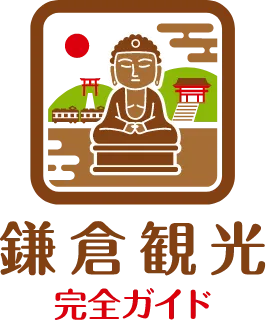Former Residence of Kachonomiya (旧華頂宮邸)
Discover the Former Residence of Kachonomiya (旧華頂宮邸)
Tucked away in one of Kamakura’s distinctive valleys, or yato (谷戸), the Former Residence of Kachonomiya is a representative Western-style villa from the early Showa period. Completed in spring 1929, it was built as the private home of Prince Hiroyuki Kacho (華頂博信), a former imperial family member who was granted the name “Kacho” and the title of marquis after leaving the imperial household. Though designed as a permanent residence, the Kacho couple lived here for only a few years. The “Kacho” name originates from Mt. Kacho (華頂山), the mountain name of Chion-in Temple (知恩院) in Kyoto, and reflects the residence’s historical ties to the Fushimi-no-miya imperial branch.
Architectural Highlights: Western Villa Meets Traditional Tea House
The main building is a three-story wooden structure with a half-timbered façade and a copper-tiled roof, standing as one of the largest Western-style villas in Kamakura after the Kamakura Museum of Literature. Built in the inland area after the Great Kanto Earthquake, the residence exemplifies the elegance of villa architecture during that period. The garden follows a formal French layout, with geometric patterns and seasonal flowers that soothe every visitor.
On the property stands a relocated tea house named Mui-an (無為庵) and its original gate. The contrast between the refined tea house, with its octagonal ceiling and varied wooden columns, and the Western villa highlights the coexistence of Japanese and European aesthetics, enriching the visitor experience.
Cultural Significance and Historical Value
The Former Residence of Kachonomiya is recognized as a rare surviving example of early Showa villa architecture and is considered a symbol of Kamakura’s villa culture. It is designated as an Important Scenic Building by Kamakura City and registered as a National Tangible Cultural Property. It is also listed among the “100 Historic Parks of Japan.”
Experiences and Seasonal Features
Visitors can enjoy roses in spring and vibrant foliage in autumn. The tea house Mui-an provides a meditative space that reflects the elegance of Japanese design. On open days, volunteers from the local community sometimes offer complimentary coffee—creating a warm, local connection.
No Goshuin or Omikuji, But Spiritual Fulfillment
While there are no omikuji or goshuin at the Former Residence of Kachonomiya, the quiet paths and serene tea room invite deep reflection, offering a spiritually enriching experience in place of ritual.
How to Get There from Tosh’s Place (トシズプレイス)
From the east exit of Kamakura Station (鎌倉駅), take a Keikyu Bus and get off at the Jomyo-ji (浄明寺) stop. From there, it’s about a 4-minute walk. The garden is open throughout the year: 10:00–16:00 (April to September) and 10:00–15:00 (October to March). Closed Mondays and Tuesdays (or the following weekday if a holiday). Admission is free. Restrooms are not located on-site but are available nearby at the public facility next to Hokoku-ji Temple (報国寺).
Best Times and Seasons to Visit
Spring roses and autumn foliage are especially recommended. For those on overnight stays, early mornings or quiet daytime hours allow for unhurried appreciation of the space. These peaceful moments are often missed on day trips, making the experience more rewarding for slow travelers.
Who Should Visit?
- Those interested in historical buildings and cultural heritage
- Visitors seeking peace in a refined garden setting
- Art lovers drawn to East–West architectural fusion
- Travelers fascinated by design details and photography
- Anyone wishing to pause and reset away from daily routines
Staying at a self-service, kitchen-equipped smart hotel like Tosh’s Place (トシズプレイス) allows you to make the most of your schedule—drop by for a morning walk or mid-day retreat without the pressure of fixed plans.
Wrap-Up: Western Elegance Meets Japanese Calm—at Your Own Pace
The Former Residence of Kachonomiya is a quiet, refined space where historical prestige meets the beauty of hybrid architecture. During spring and autumn openings, visitors can step inside and glimpse a bygone lifestyle. With its blend of cultural significance and tranquil design, the residence offers a unique Kamakura experience. Base your trip at Tosh’s Place to fully enjoy this hidden treasure—take your time, and let Kamakura reveal its quieter side.
